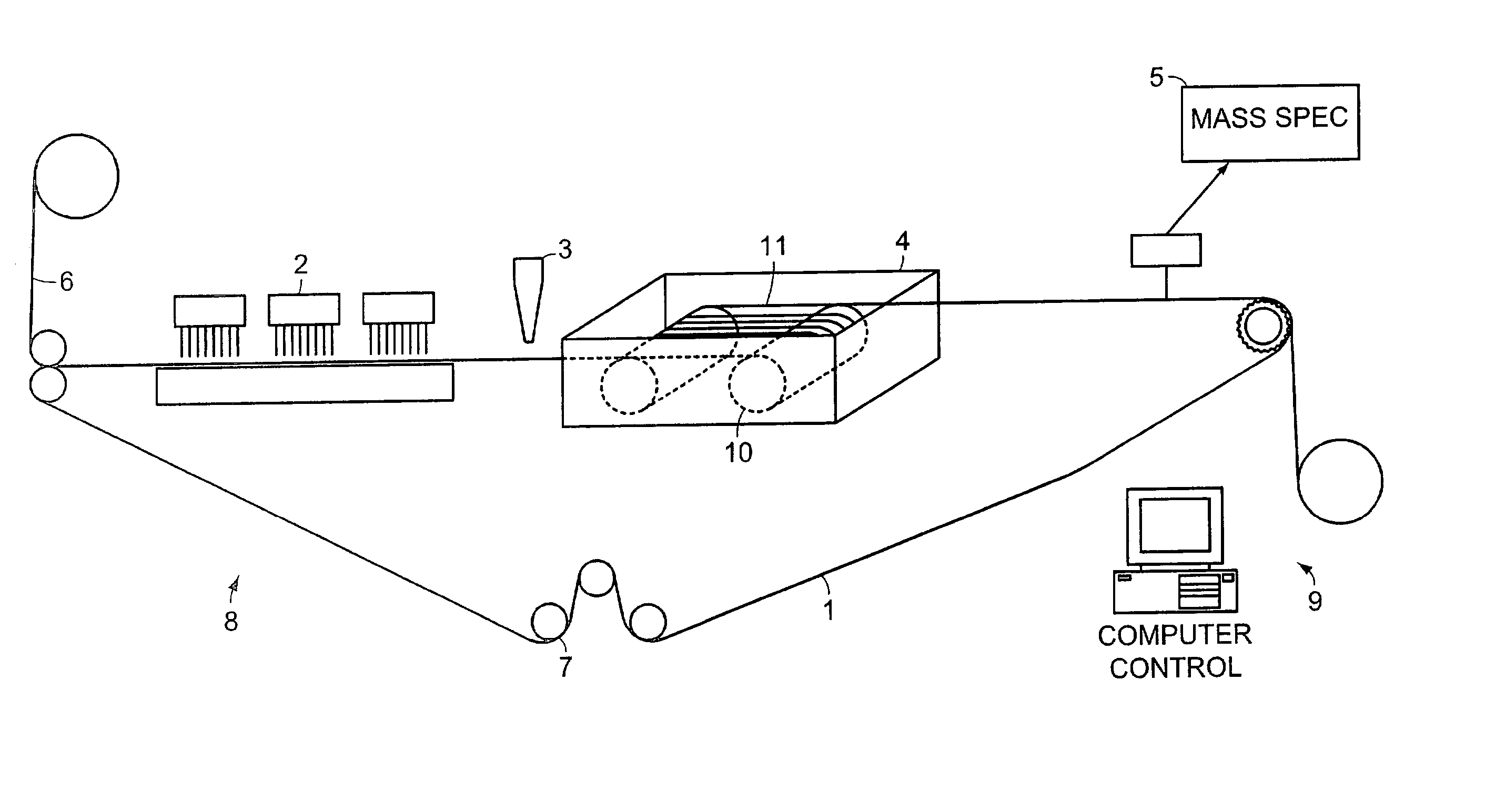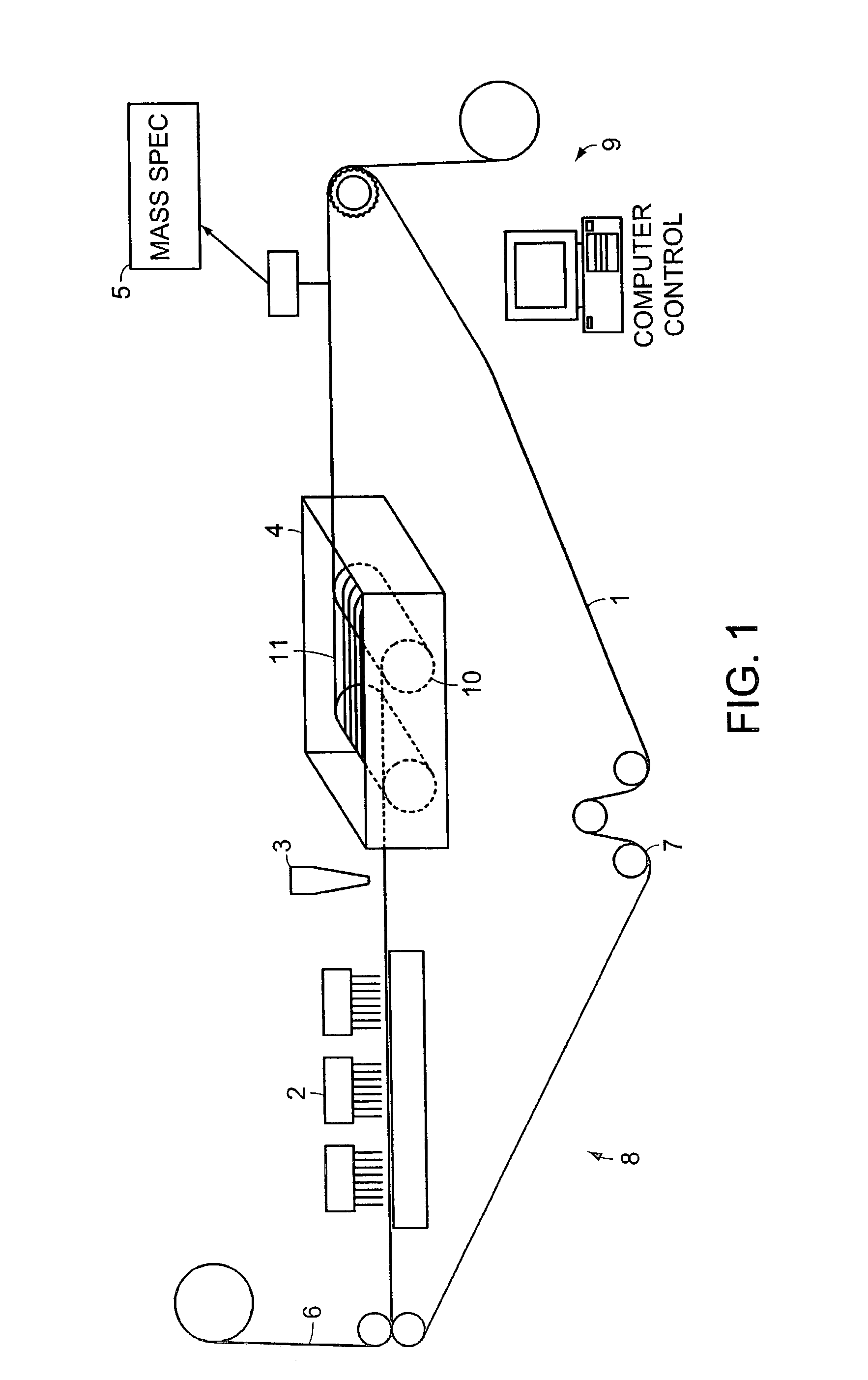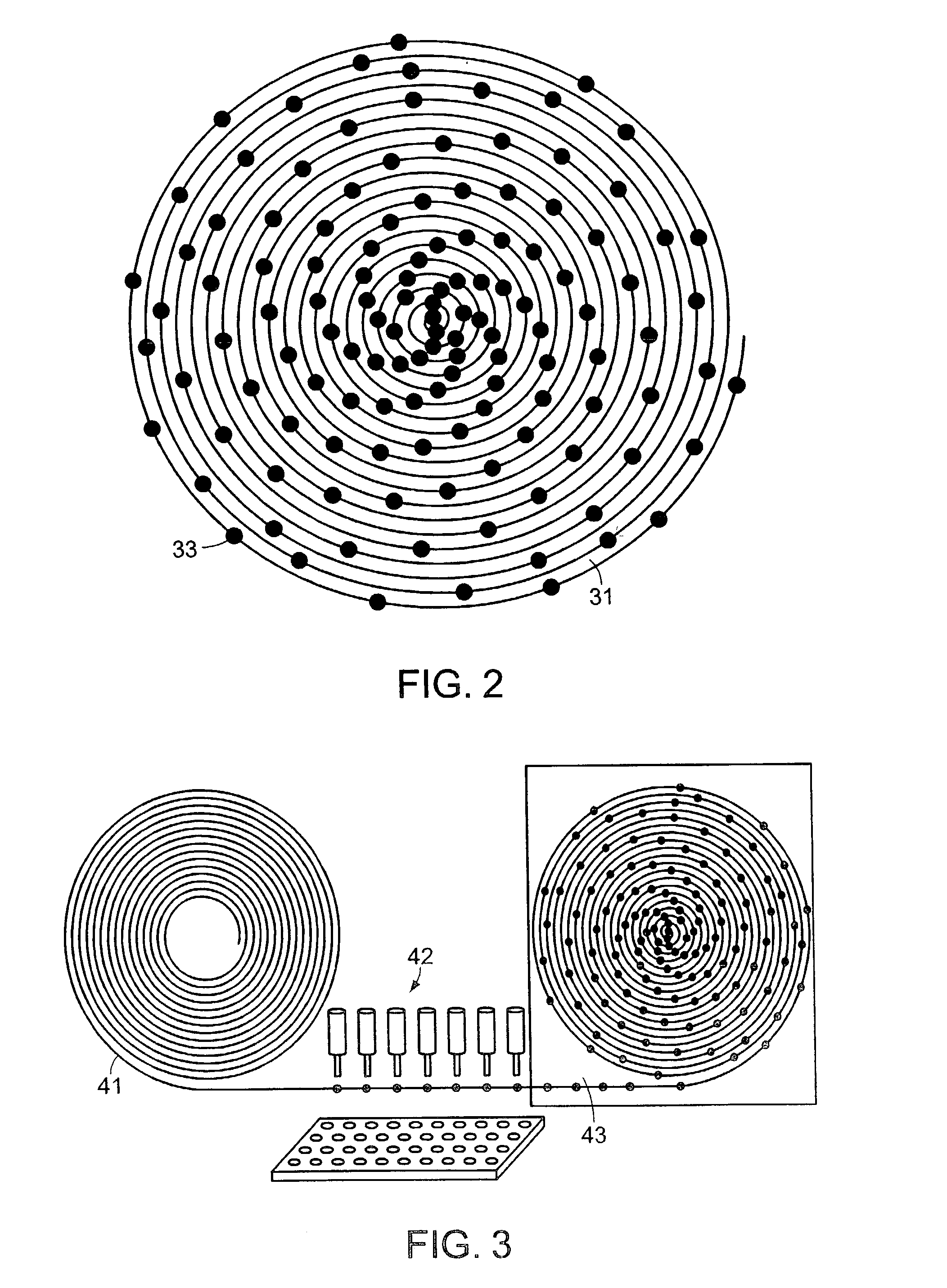System and method for high throughput screening of droplets
a droplet and high throughput technology, applied in the field of system and method for high throughput droplet screening, can solve the problems of non-quantitative transfer, clogging of the valve and changing the pressure of the fluid, and build-up of static charge on the surfa
- Summary
- Abstract
- Description
- Claims
- Application Information
AI Technical Summary
Problems solved by technology
Method used
Image
Examples
example 1
[0121] .alpha.-Chymotrypsin is a protease that cleaves proteins and peptides at aromatic amino acids such as phenylalanine, tyrosine, and tryptophan. The example assay attempts to discover inhibitors of .alpha.-chymotrypsin. Several optical assays for .alpha.-chymotrypsin have been developed and are commercially available. These assays involve a peptide that has been derivatized with a fluorescent molecule. Upon clevage by chymotrypsin, the fluorophore is released and the fluorescence signal of the sample upon excitation by light at the appropriate wavelength is increased. Protocol for the commercially available assays use phosphate buffered saline (PBS) or Tris-HCl buffer as the reaction mixture. The major limitation of this assay system is that the natural biological substrate for .alpha.-chymotrypsin is not being used in the assay. Rather, the natural peptide product is derivatized with a fluorophore to satisfy the requirements for an optical-based assay system.
[0122] The example...
example 2
[0125] A high throughput mass spectrometry-based assay to determine the IC.sub.50 for an inhibitor of 15-lipoxygenase was developed. 15-lipoxygenase is an enzyme that catalyzes the specific hydroxylation of arachidonic acid to form 15(S)-HETE. Both substrate and product of the assay can easily be monitored by negative ion electrospray ionization mass spectrometry (ESI-MS). An assay replacing non-volatile buffers with volatile buffers was developed for the high throughput mass spectrometric analysis of inhibitors. The results of this invention were compared to those obtained by conventional HPLC-MS measurements.
[0126] Arachidonic acid was used as the substrate at a concentration of 50 .quadrature.M. Caffeic acid (3,4-dihydroxycinnamic acid) is a known inhibitor of lipoxygenases and was used in this assay. A 7 point log dilution of caffeic acid starting from 2 mM was made and the reaction mixtures were incubated for 30 minutes at 37.degree. C. 50 mM Tris-HCL buffer (pH 7.4) and 10 mM ...
PUM
| Property | Measurement | Unit |
|---|---|---|
| temperatures | aaaaa | aaaaa |
| temperatures | aaaaa | aaaaa |
| surface energy | aaaaa | aaaaa |
Abstract
Description
Claims
Application Information
 Login to View More
Login to View More - R&D
- Intellectual Property
- Life Sciences
- Materials
- Tech Scout
- Unparalleled Data Quality
- Higher Quality Content
- 60% Fewer Hallucinations
Browse by: Latest US Patents, China's latest patents, Technical Efficacy Thesaurus, Application Domain, Technology Topic, Popular Technical Reports.
© 2025 PatSnap. All rights reserved.Legal|Privacy policy|Modern Slavery Act Transparency Statement|Sitemap|About US| Contact US: help@patsnap.com



